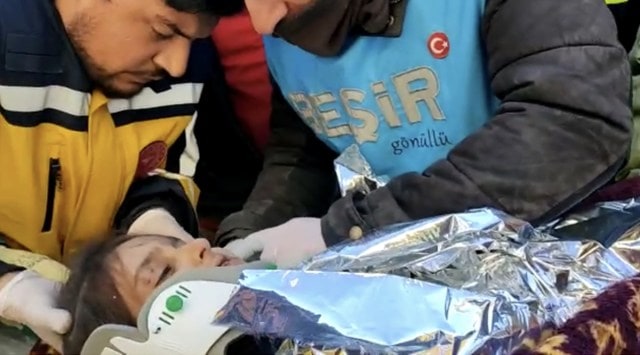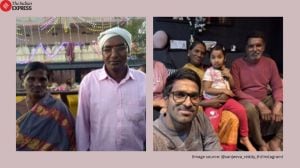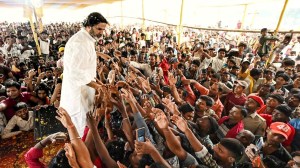80 hours after Turkey quake, how NDRF found 6-year-old — with Julie’s help
For India’s National Disaster Response Force personnel deployed in Noordagi in earthquake-hit Turkey’s Gaziantep province, it was a “miracle”.
 The girl rescued in Noordagi city.
The girl rescued in Noordagi city. FOR A whole day and night, they worked through “icy winds”, drilling holes in concrete slabs — only to find the dead. On the morning of the second day, their dog Julie “barked and lunged towards the rubble of a three-storey building”. The rescuers followed. About three hours later, a cry rang out: “There is a child alive here.”
For India’s National Disaster Response Force personnel deployed in Noordagi in earthquake-hit Turkey’s Gaziantep province, it was a “miracle”.
“The six-year-old girl was taken out of the debris and handed over to local authorities who airlifted her to hospital… It had been 80 hours since the quake. We had been at work continuously since we landed on February 7, and hadn’t found anything except the dead… We were witnessing a miracle,” Commandant Gurminder Singh, leader of the NDRF contingent in Turkey, told The Indian Express.
The 18-member team that rescued the girl was among the three deployed by NDRF — 151 personnel and four dogs — in Turkey. It was among the two deployed in Gaziantep — Noordagi is located about 23 km from the quake’s epicentre and had seen nearly 600 buildings collapse completely. The other NDRF team is in Hatay province.
What keeps the team going, Commandant Singh said, is the challenge of saving lives and the warmth of local residents. “At debris sites, in the biting cold out in the open, they sit for hours to hear from us. No one panics or agitates. Even when we find the dead, they come and hug us and kiss our hands… They call us ‘Hindistani’,” he said. The crowning moment, so far, has been the six-year-old’s rescue.
According to Singh, the team was alerted by that bark from Julie, at around 9 am. The rescuers then began burrowing into the debris. After two hours, they found the body of a 75-year-old woman, indicating that her family, dead or alive, could be nearby. An hour later, NDRF Sub-Inspector Bintao Boria found the bodies of a couple.
“The woman’s body appeared to be curled over something,” said Singh. “As Boria moved the body, he found a six-year-old girl, motionless, eyes shut. On examination, he detected movement under the eyelids. He shouted out, ‘There is a child alive here’.”
The next day, the NDRF pulled out alive a 13-year-old girl who had been located by Turkish Army personnel in the rubble of an eight-storey building. Apart from these two survivors, the NDRF has pulled out 28 bodies from the debris. “All our success during this rescue is thanks to the four dogs we have brought here,” Singh said.
For the NDRF teams, like the Indian Army rescuers in Turkey, the challenges are many and varied: from the harsh weather, with temperatures dropping to -5 degree Celsius, to a local administration in disarray; the language barrier to exhaustion.
“This is a specialised job based on intelligence. The idea is to work on sites that can have more survivors. However, on the first day, we were on our own… And while we had brought an interpreter with us, a local interpreter would have been more useful,” Singh said.
Apart from a few team members falling sick in the cold, Singh pointed to the exertion of having not slept for three nights at a stretch. “The first three days in any rescue operation are the most crucial…when most lives can be saved. During this period, we devote each hour to the rescue,” he said.







